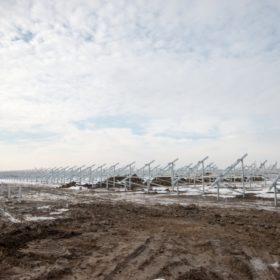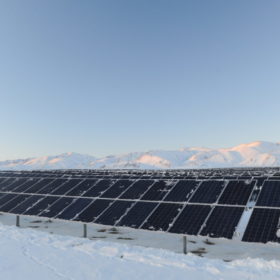Solar Systems LLC builds 15 MW PV plant in Russian region of Astrakhan
The government of the Russian region of Astrakhan announced that work on the first large-scale PV plant in the area has begun. Completion on the 15 MW project, which is being developed by local developer Solar Systems, is scheduled for the third quarter of this year.
African Development Bank finances Mali’s first large-scale PV project with $25 million
The government of Mali has secured further funds to build the country’s first large-scale PV project. The 33 MW Segou Solar PV Project will sell power to local utility under a 25-year PPA.
France to introduce new regulation for self-consumption
France’s Parliament has given final passage to a law that regulates the installation of renewable energy systems for self-consumption. The new legislation will provide a clear regulatory framework for the grid-connection of these installations.
Romania’s PV capacity grew by 70 MW in 2016
Romania’s solar market registered a slight drop in new installations in 2016. Approximately 70 MW was installed last year. This capacity is represented by MW-scale PV projects developed under the green certificate scheme launched in 2011.
SolarPower Europe summit opens, 6.7 GW installed in Europe in 2016
The European solar market decreased by 21% last year. This disappointing if not unexpected news opened SolarPower Europe’s annual summit in Brussels today. Grid integration of Europe’s solar capacity, EU market rules for protecting the ‘prosumer’ and reforms to the continent’s faltering Emissions Trading Scheme were major themes during the plenary session.
Hevel Solar energizes four PV plants totaling 35 MW in Russia
The Russian solar company has connected to the grid four large-scale PV plants in Russia. Its solar operational capacity in the country has now reached 75 MW.
EU supports Africa’s renewable energy and solar development with €300 million
The European Commission has decided to support the Africa Renewable Energy Initiative with €300 million ($317.7 million). The funds are intended to leverage up to €4.8 million ($5 billion) and to help finance 19 renewable energy projects totaling about 1.8 GW.
Enel Green Power converts Italian module factory to production of bi-facial, heterojunction technology
Italy’s ENEL will invest €80 million ($84.4 million) to convert its PV module manufacturing facility, in southern Italy, from amorphous silicon to bi-facial heterojunction modules. ENEL expects to launch its new modules in 2018 and to reach a capacity of 240 MW in 2019.
Norwegian solar market sees the light with 366% growth in 2016
Around 11 MW of new PV capacity was installed last year in Norway. The volume of new installations grew by 366% compared to 2015. This growth was mainly driven by the country’s regulation for self-consumption and the green certificate scheme.
Neo Solar Power confirms it will gradually exit polycrystalline production
The Taiwanese solar cell maker has confirmed to pv magazine that it will exit the polycrystalline PV business and will focus on its monocrystalline products. The company intends to gradually lower its polycrystalline PV capacity.









